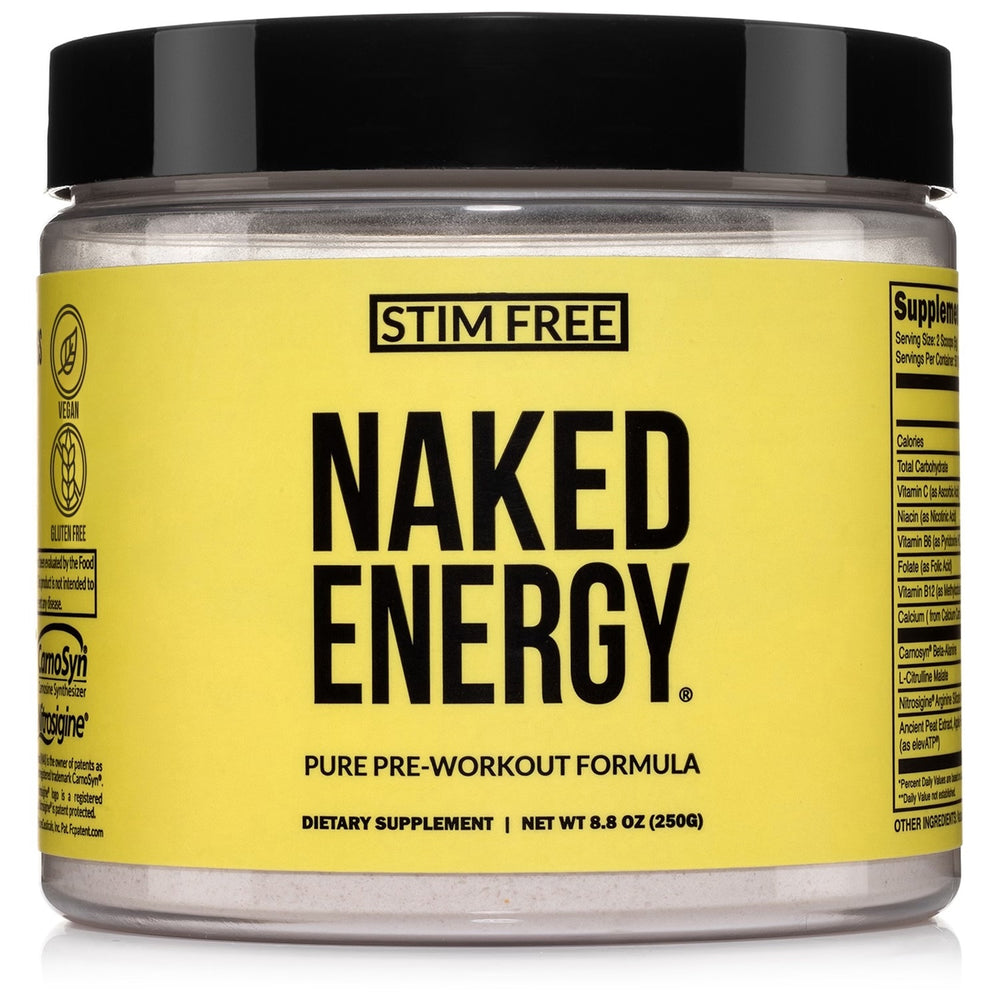Essential amino acids (EAAs) and branched chain amino acids (BCAAs) are two common supplements for athletes. These two supplements are known for supporting muscle growth, boosting recovery, and improving endurance.
Many consumers are confused about the difference between these two supplements and wonder if they are interchangeable, or if one is better than the other.
Contrary to what some believe, EAAs and BCAAs are different, and understanding how each of them work can help you make a more informed decision on which supplement to use.
Knowing when and why to choose EAAs and BCAAs has the potential to improve your training outcomes and overall muscle performance.
This article explains the science behind EAAs and BCAAs and will outline the benefits of each.
What Are Amino Acids and Why Do They Matter?

Amino acids are often referred to as the body’s building blocks for good reason—they are essential for muscle growth, tissue repair, immune function, and overall health. The body utilizes 20 different amino acids, which are grouped into three categories: essential, non-essential, and conditionally essential amino acids.
Essential amino acids (EAAs)—such as leucine, isoleucine, and valine—cannot be synthesized by the body and must be obtained through food or supplements. There are nine in total, all of which are required to support basic physiological functions.
Non-essential amino acids, like alanine and asparagine, can be produced by the body and are generally available in adequate amounts under normal conditions.
Conditionally essential amino acids, including glutamine and arginine, are usually synthesized by the body but become essential during periods of stress, illness, or intense physical exertion.
Together, amino acids play a vital role in regulating muscle protein synthesis, supporting hormone and enzyme production, aiding immune response, and influencing neurotransmitter activity. They are found in protein-rich foods such as meat, fish, dairy, eggs, soy, and legumes.
Scientific research continues to underscore the critical role amino acids play in physical performance, particularly their ability to stimulate muscle protein synthesis when consumed around periods of exercise (1).
What Are BCAAs?

BCAAs, or branched chain amino acids, refer to three specific essential amino acids: leucine, isoleucine, and valine.
These three amino acids have a unique branched chain chemical structure and they play a specific role in muscle metabolism. This structural difference allows BCAAs to bypass normal metabolic pathways and be used more rapidly by muscles during physical activity.
Leucine is perhaps the most important BCAA for muscle growth as it is a key driver for muscle protein synthesis. Without enough leucine, muscle protein synthesis is significantly impaired—even if total protein intake is adequate.
Isoleucine and valine are responsible for energy production and can help support energy levels during prolonged exercise and muscle exertion. Isoleucine also plays a role in glucose uptake and energy regulation, which can be particularly beneficial during endurance exercise.
Valine, on the other hand, contributes to mental focus and central nervous system function during training.
BCAAs are helpful for muscle function as they are metabolized directly in skeletal muscle rather than the liver. This unique property also means BCAAs can be used as an immediate energy source during intense exercise, potentially delaying fatigue and enhancing workout capacity.
They have been shown to reduce muscle soreness, improve endurance, and preserve lean muscle mass.
Many athletes take BCAA supplements to improve exercise performance and optimize body composition. However, BCAAs are only effective when taken in addition to adequate protein and a balanced diet to support overall health, performance, and muscle function.
What Are EAAs?

EAAs, or essential amino acids, are a group of amino acids that the body cannot produce on its own. Therefore, EAAs are necessary to obtain from the diet or supplements. Because the body lacks the enzymes necessary to synthesize these amino acids, they must be replenished regularly through dietary intake to support key physiological processes.
These include:
-
Leucine
-
Isoleucine
-
Valine
-
Lysine
-
Methionine
-
Threonine
-
Phenylalanine
-
Histidine
-
Tryptophan
Each of these amino acids plays a unique role in the body. For example, lysine is important for collagen formation, methionine is involved in detoxification systems, and tryptophan is a precursor to serotonin, which affects mood and sleep.
EAAs are different from BCAAs because they can in fact build full muscles and sustain muscle growth and repair. This is because complete muscle tissue requires a full spectrum of amino acids to be built, and BCAAs alone cannot fulfill all the roles necessary for long-term muscle development and recovery.
EAAs are found in high quality sources of protein such as meat, dairy, eggs, or soy products.
Most people who eat a varied diet get plenty of EAAs from their food. Still, even people with adequate intake may benefit from EAA supplements around intense training periods, during injury recovery, or when appetite or food availability is limited.
However, there are certain people who can benefit from additional supplementation. For example, people who are following a low protein diet, older adults, or those who follow a vegan or vegetarian diet may benefit from essential amino acid supplements.
Many studies have found that EAAs stimulate a greater anabolic response than BCAAs alone (2).
Ultimately, EAAs are ideal for building muscle and supporting muscle recovery particularly when dietary protein is limited. EAAs can ensure the body has all necessary amino acids. They are also easier to digest and absorb in supplement form, making them useful for people with gastrointestinal issues, post-operative recovery needs, or athletes who need quick, portable nutrition.
EAAs vs BCAAs: Key Differences Explained

Branched-chain amino acids (BCAAs) and essential amino acids (EAAs) are both popular supplements for active individuals, but they aren’t interchangeable. Understanding the differences between them can help you make a more informed choice based on your goals, training intensity, and diet.
While BCAAs—leucine, isoleucine, and valine—play a role in supporting muscle metabolism, they represent only 3 of the 9 essential amino acids needed for complete muscle protein synthesis. EAAs, on the other hand, provide the full spectrum necessary for optimal muscle repair, recovery, and growth.
This next section will explain some of the key differences between BCAAs and EAAs:
|
Feature |
BCAAs |
EAAs |
|
Contains all 9 essential amino acids? |
❌ |
✅ |
|
Supports full muscle protein synthesis |
Limited |
Complete |
|
Best for fasted workouts |
✅ |
✅ (more effective) |
|
Budget-friendly |
✅ |
❌ (typically more expensive) |
|
Suitable for vegans |
✅ |
✅ |
|
May delay fatigue during long training |
✅ |
✅ |
|
Ideal for muscle growth |
❌ (not sufficient alone) |
✅ |
|
Risk of imbalance (if used alone long-term) |
Moderate |
Low |
Branched-chain amino acids (BCAAs)—leucine, isoleucine, and valine—are a subset of the nine essential amino acids (EAAs). While BCAAs play a role in supporting muscle metabolism and can reduce muscle soreness after intense exercise, they do not contain all the essential amino acids required for complete muscle protein synthesis.
There are nine EAAs in total, and each one is necessary for effective muscle growth, repair, and recovery.
Because BCAAs only provide three of the nine, they can’t fully support muscle building on their own—especially if your overall protein intake is low. This is especially important for athletes or active individuals who train frequently and intensely.
While both BCAAs and EAAs can be helpful around workouts, EAAs tend to be more effective, particularly in fasted states or when dietary protein is limited.
They offer a complete amino acid profile, ensuring the body has everything it needs to stimulate and sustain muscle protein synthesis. EAAs also play roles in immune function, energy metabolism, and the production of key enzymes.
EAAs may be especially useful before early morning workouts, during periods of illness or recovery, or for older adults and individuals with increased protein needs. For those following a plant-based diet, EAA supplements can help fill potential nutritional gaps.
Although EAA supplements are typically more expensive than BCAAs, they offer broader and more reliable benefits. It's also worth noting that EAA supplements are rapidly absorbed and easy on the digestive system.
It’s important to remember that BCAAs and EAAs are not the same. Choosing between them depends on your individual goals and diet. If you’re already consuming adequate high-quality protein, BCAAs may still offer value—for example, reducing fatigue or muscle soreness.
But without the full spectrum of EAAs, long-term reliance on BCAAs alone could result in amino acid imbalances or hinder optimal recovery.
When to Take BCAAs

BCAA supplements are best utilized in the body when taken at certain times. The optimal dose is typically around 5–10 grams, depending on body size and training intensity.
For example, try taking BCAAs before a fasted workout. When you train early in the morning before eating breakfast, taking BCAAs can provide a bit of energy that can preserve muscle mass. BCAAs may also be useful during intermittent fasting periods, when extended gaps between meals might otherwise increase muscle breakdown.
To delay the onset of fatigue during endurance training, BCAA supplements can help. Intra-workout consumption—sipping BCAAs during long or intense training sessions—can help maintain energy levels and reduce perceived exertion.
Additionally, if you are in a calorie deficit, taking BCAAs can help reduce muscle breakdown, therefore preserving muscle mass while your body focuses on fat loss.
Athletes who are looking for an additional boost during training may benefit from BCAA supplements before or after a workout.
Don’t forget that BCAAs cannot replace your body’s need for complete sources of protein. BCAAs are a fantastic addition to a varied diet rich in high quality protein sources.
However, BCAAs work best when used strategically—timing, dosing, and dietary context all matter.
When to Take EAAs

EEAs are optimal during periods of high training intensity, or if you’re getting limited dietary protein. The EEAs can help with comprehensive muscle support by supplying all nine essential amino acids that the body cannot produce on its own.
In periods of fasted training, EAAs provide the amino acids that are necessary for muscle protein synthesis, reducing the risk of muscle breakdown when training on an empty stomach.
With low calorie diets, EAAs help preserve lean muscle mass by stimulating muscle-building processes even in the absence of surplus calories.
EAAs are also helpful for older adults as they can help prevent age-related muscle loss and support overall mobility and function.
Lastly, anyone following a plant based diet may benefit from taking EAAs as they ensure complete amino acid intake when dietary protein is limited or incomplete. This can be especially useful for athletes or highly active individuals who may struggle to meet protein needs through plants alone.
There are many scientific studies that suggest the anabolic power of EAAs. A recent 2020 study found that those who consumed EAAs in addition to whey protein experienced more anabolic muscle activity compared to those who only consumed whey protein (3).
If your goal is to either maintain or build muscle, essential amino acids offer a more effective option than simply taking branched chain amino acids alone, as they support a full spectrum of muscle protein synthesis and recovery.
Can You Take Both?

It is in fact possible to take both EAAs and BCAAs, however, it is likely unnecessary to double up on your amino acid supplement.
BCAAs are part of the EAA group, meaning that EAA supplements already provide the BCAAs that your body needs. Taking both may provide more amino acids, but it actually won’t likely lead to better outcomes unless you’re specifically utilizing them as part of a comprehensive timing-specific strategy.
For example, perhaps you choose to take BCAAs during your workout to reduce fatigue, while you choose to take EAAs after your workout to support muscle recovery and muscle growth.
However, if you’re consuming adequate protein in your diet, the added benefit of taking both types of amino acids is likely marginal.
Perhaps the best course of action is to first prioritize your daily protein intake. Remember, supplements can enhance an already adequate and well-balanced diet. If you’re optimizing your diet, taking EAAs can offer some additional support.
Choosing the Right Supplement
When choosing between EAAs and BCAAs, it’s important to consider your goals and individual needs.
Consider what phase of training you’re in. Are you aiming to bulk, cut, or maintain? If you’re looking to bulk up, choosing EAAs may be the best option. They contain all nine essential amino acids necessary for supporting muscle growth, recovery, and repair.
If you’re in a cutting phase, EAAs are also most ideal, however, taking BCAAs may offer the additional benefit of reducing fatigue and soreness, which can help sustain performance when calories are low.
Lastly, to preserve muscle mass, EAAs are the most comprehensive and efficient amino acid supplement.
Budget is often another consideration when choosing the right supplement for you. While EAAs cost more, they do also offer more complete support. If you already consume enough high-quality dietary protein, BCAAs might still provide some intra-workout value at a lower cost—but EAAs are generally a better long-term investment.
Most importantly, be sure to choose a high quality supplement. Look for transparent ingredient labels with no added sugars, fillers, or additives.
Products like Naked EAAs and Naked BCAAs are great options for clean formulas with no unnecessary additives. You may choose a supplement in capsule or powder form, and this mainly comes down to personal preference.
What to Expect from Each
 Before starting a new supplement, it’s important to know what to expect.
Before starting a new supplement, it’s important to know what to expect.
With taking BCAAs you may experience a sublet reduction in muscle soreness and notice less fatigue during your workouts. You shouldn’t expect any significant muscle gains, particularly if the BCAAs are one of your only protein sources.
When you start to take EAAs, you will likely notice more results. You’ll find that you may feel stronger in the gym and recover faster after a workout. Over time, you may notice more positive training outcomes, as long as your diet is on point.
Keep in mind that no one supplement can make up for a poor diet, undereating, poor sleep, or inconsistent training. By focusing on all aspects of your health and wellbeing, taking EAAs can be a wonderful addition to your routine and as a part of a sustainable approach to staying strong and lean.
Conclusion: Which One Should You Take?

Ultimately, the choice between BCAAs and EAAs depends on your goals, lifestyle, and budget.
BCAAs may be more suitable for fasted cardio workouts, or for those who want a quick energy boost during training. BCAAs are also a more affordable option, making them accessible for users on a budget. If you’re already meeting your protein needs through your diet, BCAAs can be a solid option to boost energy and muscle recovery.
However, EAAs are the superior amino acid supplement in most situations. Not only do EAAs already contain the three BCAAs (leucine, isoleucine, and valine), but they also include additional amino acids that your body requires for muscle protein synthesis.
EAAs are the most effective for muscle building, recovery, preventing muscle loss, and supporting overall muscle performance.
If you train regularly and want to recover well from intense training sessions, or perhaps you follow a plant based diet, EAAs are the best choice.
In conclusion, EAAs offer more complete support and are the optimal choice for most people who are aiming to maintain or build muscle.
Disclaimer
This content is for educational purposes only and is not a substitute for medical advice. Always consult a physician or registered dietitian before starting any supplement routine, especially if you have underlying health conditions or are taking medication.
Also Read:
BCAAs Before or After a Workout?







